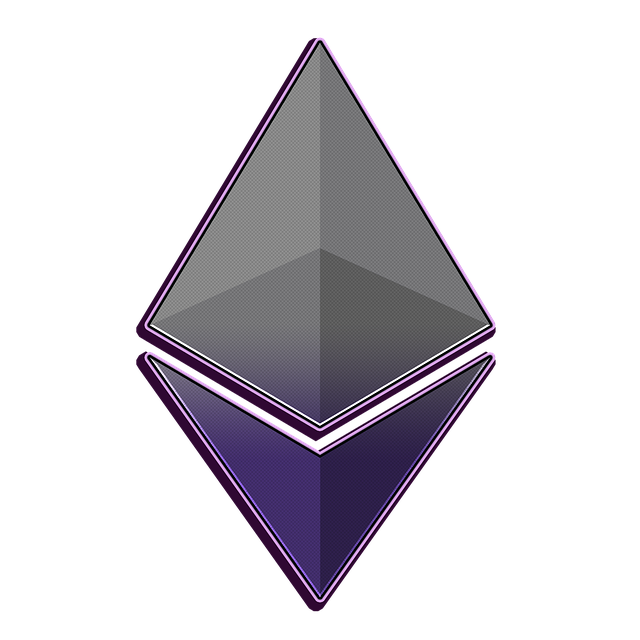Ethereum, a blockchain platform, enables developers to build decentralized applications (dApps) using smart contracts and Solidity programming language. Its open-source nature, transparency, and security make it a game-changer across various sectors. To start developing on Ethereum, set up a development environment, learn Solidity, and craft your first contract. Understanding variables, functions, and conditions is crucial for beginners. Deploying and testing smart contracts using tools like Truffle or Hardhat ensures their functionality and security. Adhering to best practices, including rigorous testing and code reviews, is essential for creating secure smart contracts on Ethereum.
“Dive into the world of decentralized applications with our comprehensive guide to Solidity, the programming language powering Ethereum‘s blockchain revolution. Whether you’re a novice or looking to enhance your skills, this beginner’s guide covers everything from Ethereum fundamentals to crafting complex smart contracts. Learn how to set up your development environment, write and test contracts, explore essential concepts, and discover best practices for Ethereum development. By the end, you’ll be equipped to create innovative solutions on the Ethereum network.”
- Understanding Ethereum: The Blockchain Revolution
- What is Solidity? Unlocking Smart Contract Development
- Setting Up Your Environment: A Step-by-Step Guide
- Writing Your First Solidity Contract: A Simple Example
- Exploring Key Concepts: Variables, Functions, and Conditions
- Interacting with Ethereum: Deploying and Testing Contracts
- Best Practices and Advanced Tips for Solidity Developers
Understanding Ethereum: The Blockchain Revolution

Ethereum, often referred to as a decentralized virtual machine, is at the forefront of the blockchain revolution. It’s more than just a cryptocurrency; it’s an open-source platform that enables developers to build and deploy smart contracts and decentralized applications (dApps). This technology ensures transparency, security, and autonomy, removing the need for intermediaries in various industries.
By harnessing the power of blockchain, Ethereum offers a new way to interact with digital assets and data. Smart contracts, self-executing agreements with predefined rules, automate processes, enhancing efficiency and trust. This innovative approach has sparked a wave of creativity, leading to the development of numerous dApps across finance, gaming, art, and more, further solidifying Ethereum’s position as a game-changer in the digital landscape.
What is Solidity? Unlocking Smart Contract Development

Solidity is a powerful programming language specifically designed for developing smart contracts on the Ethereum blockchain. It offers a user-friendly syntax, making it accessible to both beginners and experienced developers. By using Solidity, developers can create self-executing contracts with built-in rules and logic, ensuring transparency and security in transactions. This feature makes Ethereum one of the most popular platforms for decentralized applications (DApps).
With Solidity, you unlock a world of possibilities for building decentralized systems. It allows for the creation of custom tokens, decentralized exchanges, peer-to-peer marketplaces, and more. By compiling contracts into bytecode that runs on the Ethereum Virtual Machine (EVM), developers can deploy their smart contracts to the network, enabling users to interact with them through cryptocurrency wallets. This process fosters a new era of digital interactions, where trust is established through code rather than intermediaries.
Setting Up Your Environment: A Step-by-Step Guide

To begin your journey into developing on the Ethereum network, the first step is setting up your development environment. This process might seem daunting at first, but with a structured approach, it becomes manageable. Start by installing Node.js, a fundamental requirement for any Ethereum development setup. Visit the official Node.js website and download the LTS (Long-Term Support) version suitable for your operating system. Once installed, verify its setup using the command line, ensuring you have the expected version.
Next, install a popular Solidity compiler and an Ethereum client. For the compiler, Truffle or Hardhat are excellent choices, offering robust features for smart contract development. Set these up through npm (Node Package Manager) by running specific commands in your terminal. Additionally, installing an Ethereum client like Geth allows you to interact with the network, run nodes, and test your contracts locally. Follow the official documentation for each tool to configure them according to your needs.
Writing Your First Solidity Contract: A Simple Example

To begin your journey in developing smart contracts on the Ethereum network, let’s start with a simple Solidity contract example. Solidity is a powerful programming language used to write and deploy intelligent contracts on the Ethereum blockchain. Your first step is to install a development environment that supports Solidity. Many popular choices include Hardhat, Truffle, or Remix IDE, each offering unique features for crafting and testing your contracts.
Let’s consider a basic contract called “Coin.” This contract will represent digital currency where users can mint new coins and transfer them between accounts. In Solidity, you define a contract with keywords like `contract`, followed by the contract name and parentheses containing variable declarations. For instance:
`contract Coin {
string public name = “MyCoin”;
uint256 public totalSupply;
mapping(address => uint256) public balanceOf;
constructor() {
totalSupply = 0;
balanceOf[msg.sender] = 1000; // Initialize with 1000 coins for the creator
}
}`
This example sets up the `Coin` contract with essential functions for managing coin supply and user balances.
Exploring Key Concepts: Variables, Functions, and Conditions

In Solidity, a programming language designed for developing decentralized applications on the Ethereum network, understanding key concepts like variables, functions, and conditions is essential for any beginner. Variables are containers that store data, allowing developers to assign and manipulate values throughout the code. Functions, on the other hand, are reusable blocks of code that perform specific tasks; they can accept inputs (parameters) and return outputs, making them powerful tools for organizing and structuring application logic.
Conditions, expressed through if-else statements, enable developers to add decision-making capabilities to their contracts. By evaluating conditions, Solidity allows for conditional execution, ensuring that certain blocks of code are only executed under specific circumstances. This flexibility is crucial when designing Ethereum applications, where various scenarios need to be accounted for, from handling different user interactions to managing complex business logic.
Interacting with Ethereum: Deploying and Testing Contracts

Interacting with Ethereum involves deploying and testing smart contracts, a crucial step for any developer looking to build on the network. To deploy a contract, developers first need to compile their Solidity code, converting it into a format understandable by the Ethereum Virtual Machine (EVM). This process is typically handled by tools like Truffle or Hardhat, which also facilitate testing. Testing smart contracts is essential to ensure they function as intended and are free from vulnerabilities. Developers can simulate interactions with their contracts in various testing frameworks, such as Jest or Mocha, before deploying them to the Ethereum mainnet or a testnet like Ropsten or Rinkeby for further validation.
Once deployed, contracts can be interacted with through wallets on Ethereum client applications (e.g., MetaMask). Users can send transactions to trigger functions within the contract, enabling various decentralized applications (dApps) and services to be built and utilized on the Ethereum network. This interaction loop—from development to testing to deployment and finally user engagement—is what drives innovation and adoption in the Ethereum ecosystem.
Best Practices and Advanced Tips for Solidity Developers

When developing on the Ethereum network using Solidity, adhering to best practices is essential for creating robust and secure smart contracts. Firstly, always perform thorough testing and code reviews to catch potential bugs and security vulnerabilities early in the development process. The Ethereum ecosystem offers various testing frameworks like Truffle and Hardhat that facilitate unit testing and integration testing.
Additionally, staying updated with Solidity’s latest version is crucial. Regularly reviewing the language’s evolution ensures you leverage improved features and best practices. Implement secure coding patterns by avoiding common pitfalls such as reentrancy attacks and integer overflows. Remember, security is paramount in the Ethereum environment, so prioritizing secure coding will safeguard your contracts from potential exploits.
Whether you’re a coding novice or experienced developer, this guide has equipped you with the knowledge to embark on your Solidity journey. By demystifying Ethereum’s potential and providing practical examples, from setting up your environment to deploying contracts, you now possess the tools to create decentralized applications that resonate in today’s blockchain revolution. Remember that continuous learning is key in this dynamic space, so keep exploring, experimenting, and expanding your skills with Solidity on the Ethereum network.
